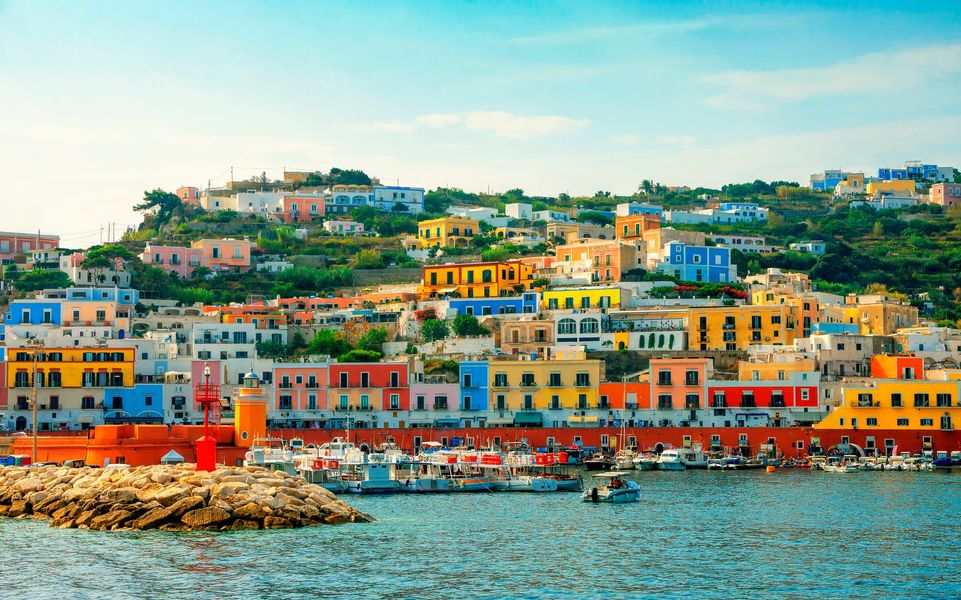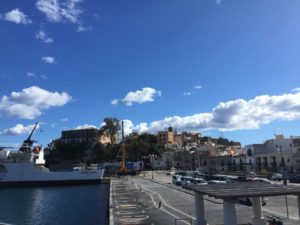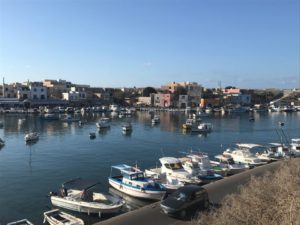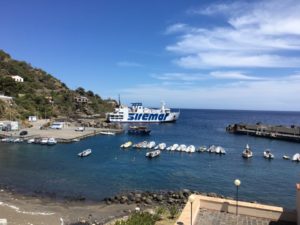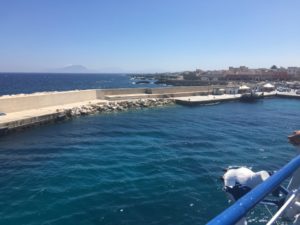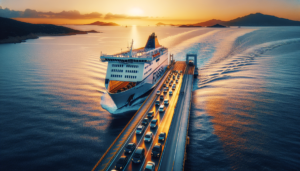What to do in Ponza
At first glance it is easy to think that Ponza can be visited in a short time and that the number of interesting places is low. The reality is quite different, as many island attractions are all to be discovered, hidden from those who want to reach Ponza and focus their attention solely on swimming in the sea. Going to the beaches and coves is certainly one of the most pleasant activities, especially when the summer heat is oppressive. But a truly enjoyable vacation must include a wide range of possibilities for things to do. Ultimately, even on this small island you can have fun by organizing different days and experiences.
1) Enter the Caves of Pilate
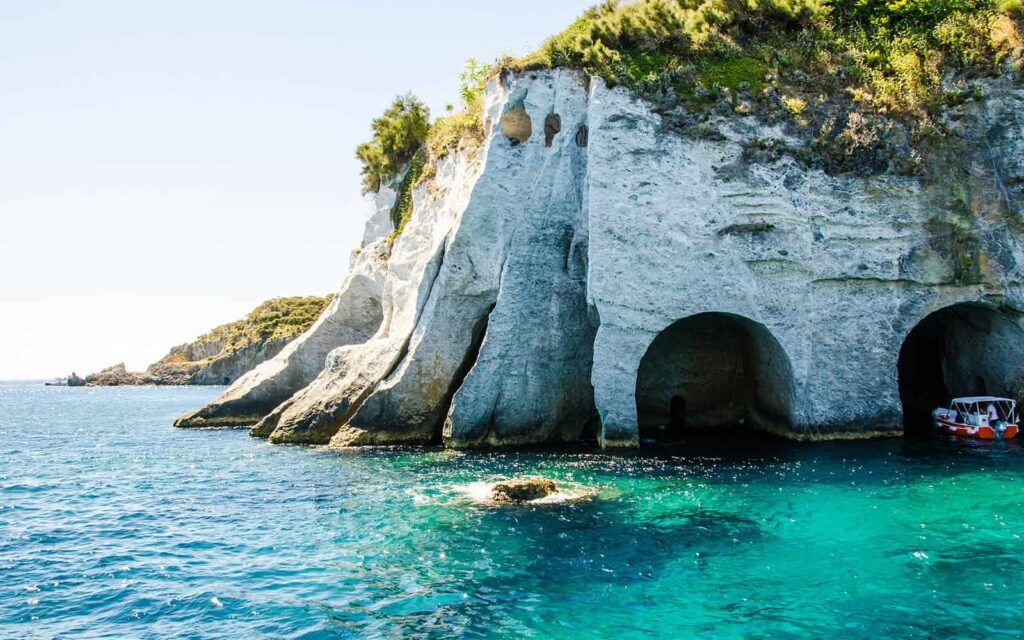
The Caves of Pilate are a system of five sea caves dug into the tuff in Roman times (1st century BC). Connected to each other, they were decorated with statues of divinities and used to breed fish, especially moray eels, and for this reason they are also called Ancient Roman Murenarium. The location is on one side of the port, and can only be visited by sea. To enter the semi-submerged caves, specific boat tours are organized, carried out both on gozzo boats, for up to eight people, and on motorboats. The tours with the latter are cheaper but do not allow the visit inside the caverns or to bathe.
2) Go to the beach
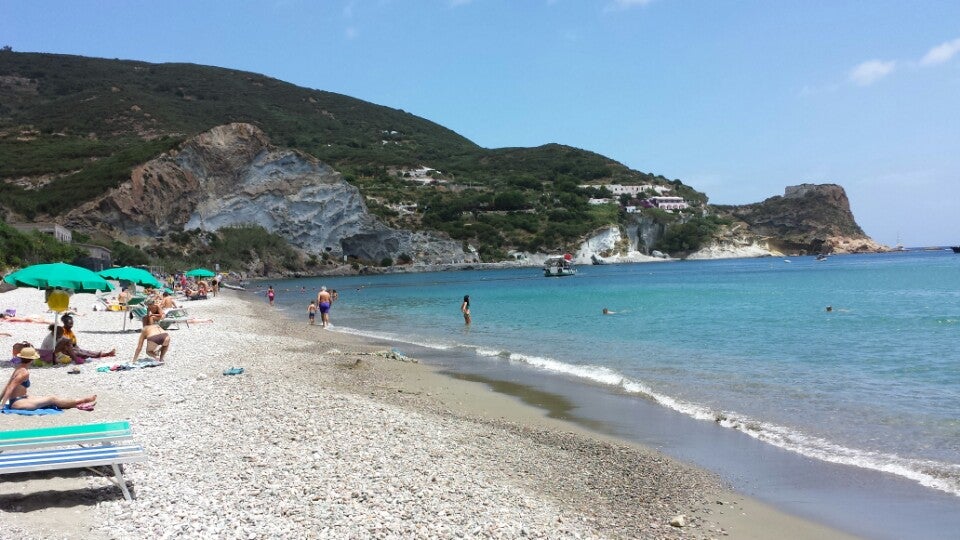
On the island the sea is spectacular everywhere. At least once you have to go to the Frontone beach, of white sand and pebbles, comfortably taking a taxi boat from the port or from the beach of Santa Maria. There are not many other beaches in Ponza but on the other hand there are also flat rocky coves such as La Caletta, not far from the Natural Pools, cove with welcoming marine pools.
3) Get to know the Ethnographic Museum and the cuisine of Gerardo Mazzella
Right on the hill above the Frontone beach, reachable by climbing the stairs from the rocks of the cove, in the headquarters of the cultural association Cala Frontone, there is the Ethnographic Museum with many objects from the past. After visiting it, you can devote yourself to the cuisine of Gerardo Mazzella. Among goats and chickens you reach a cave with a panoramic terrace and you can taste the traditional local dishes inspired by Grandma Maria, such as octopus cooked in its water, cicerchia or lentil soups, eggplant parmigiana, tuna, mackerel and anchovies in oil, scapece moray eel and other specialties to be washed down with a wine fermented in ancient tanks of white tuff.
4) Go to the Pontian Botanical Garden
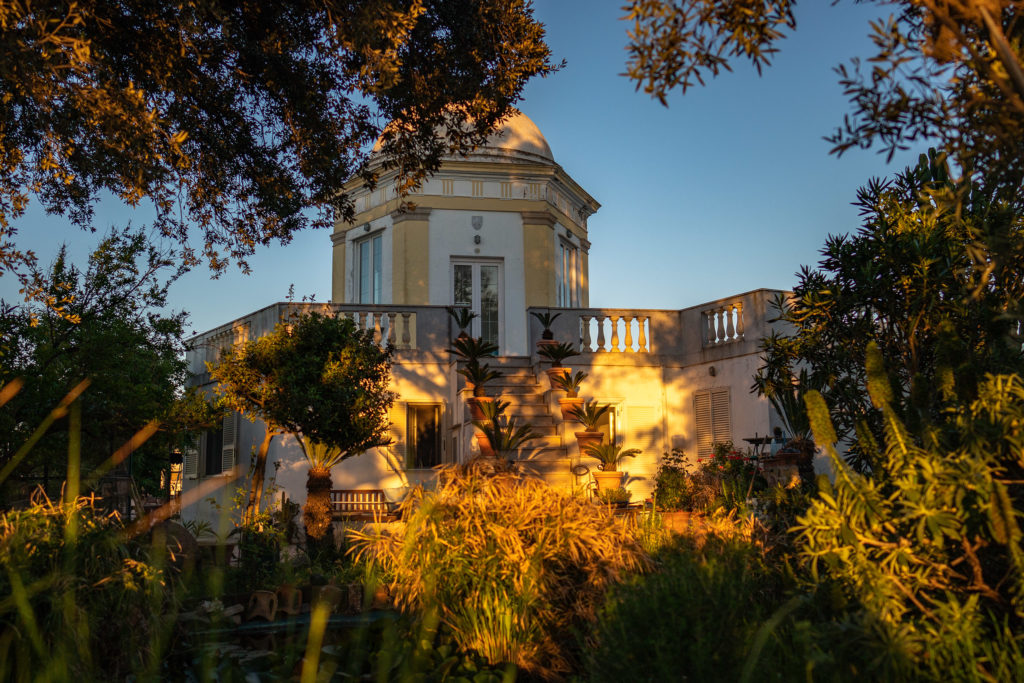
On the hill of the Bourbon Belvedere, the Pontian botanical garden occupies 15,000 square meters and contains many arboreal and herbaceous specimens of the archipelago. There are seventy plant species, including almost all of the typical wild orchids. Access is free, while guided tours and illustrative brochures can be booked for a minimum of five people.
5) Visit the Roman Cistern of Dragonara
The Romans built three cisterns on the island with an ingenious rainwater collection system. The most interesting (recently open to the public) is that of the historic center, in via della Dragonara. The archaeological site has remained incredibly intact, characterized by the wide corridors dug into the tuff. The so-called Archeopercorso allows you to visit another Roman cistern, that of the Corridor.
6) Go to Punta del Fieno and to the Antiche Cantine Migliaccio
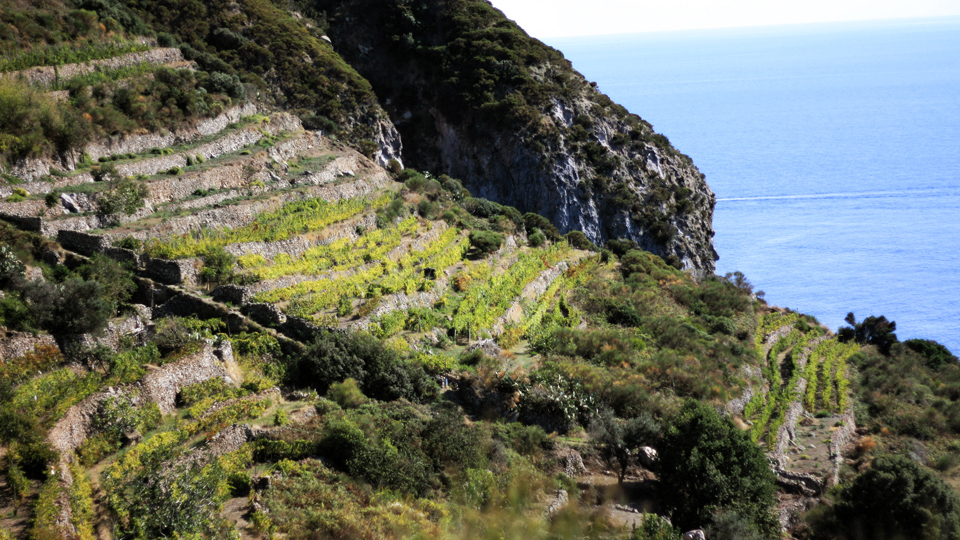
At Cape Fieno vines and legumes are grown. Carlo di Borbone entrusted the Fieno area to the Migliaccio family, originally from Ischia, who brought here the Biancolella, Per ‘e Palummo, Guarnaccia, Aglianico and Forastera vines. In addition to the vineyards, you will be able to see the ancient cellars dug into the tuff. It can be reached easily by sea or along a path of medium difficulty lasting about 40 minutes. There are in the area the Antiche Cantine Migliaccio, where you can stop for a wine tasting. After the terraced slopes, from the top of the promontory you can enjoy a wonderful panoramic view.
7) Go up to Monte Guardia
Monte Guardia is the highest with its 280 meters above sea level. It is not recommended to climb to the top during the hottest summer hours, because the mule track, which continues after Cape Fieno, is a bit tiring to travel. In addition to a breathtaking view, just before the summit, you will see the Vecchio Semaforo, a structure of the italian Navy now in disuse that had meteorological detection and signaling functions.
8) Go around the island by boat
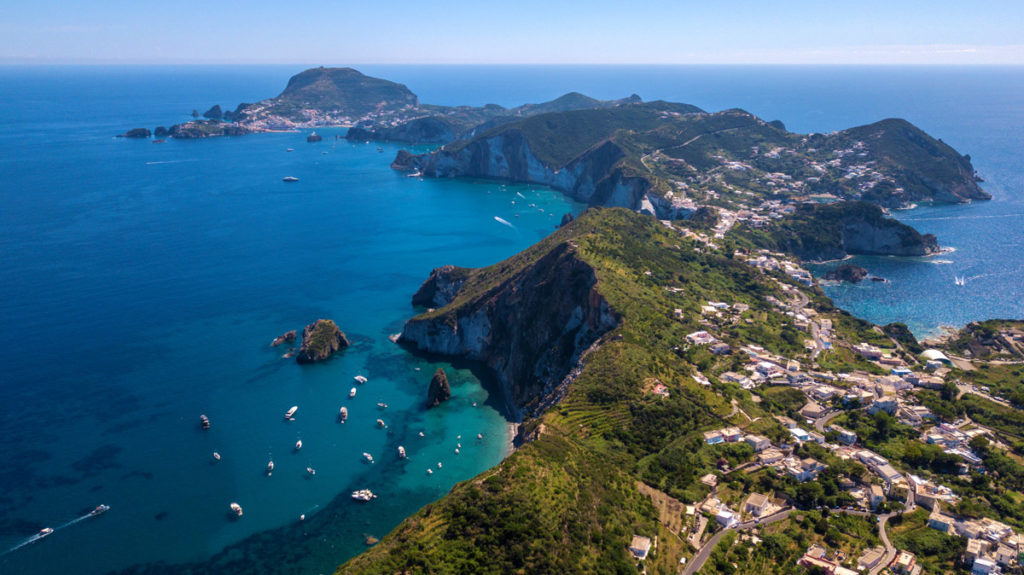
To discover all the secrets of the coast of the island, full of coves accessible only by sea, cliffs and caves, you need the classic tour of the island by boat. Several companies make the circumnavigation, which generally lasts about five hours and can include, depending on the motorboat or the gozzo, stops for swimming and / or lunch on board. It will thus be possible to admire, among other things, the Blue Caves, the Caciocavallo rock, the Fortino Bay, the Smeraldi Cave, the Core beach, Cala Felce, the beach and the stacks of Lucia Rosa, the cave of Capobianco and that of the sorceress Circe.
9) Entering the Churches
The churches on the island are as follows:
- Church of Saints Silverio and Domitilla. It is located near the port, with the central dome frescoed with images of the life of the Saints and a mosaic on the high altar.
- Church of Maria Assunta in Cielo, located in Le Forna, with three naves, houses an organ of the ‘700 and a canvas depicting the Madonna dell’Assunta.
- Church of San Giuseppe, characterized by the parvis similar to the prow of a ship.
- Church of the Madonna della Civita, located between the Mediterranean scrub on the slopes of Monte Guardia.
10) Savor Ponza’s food and wine
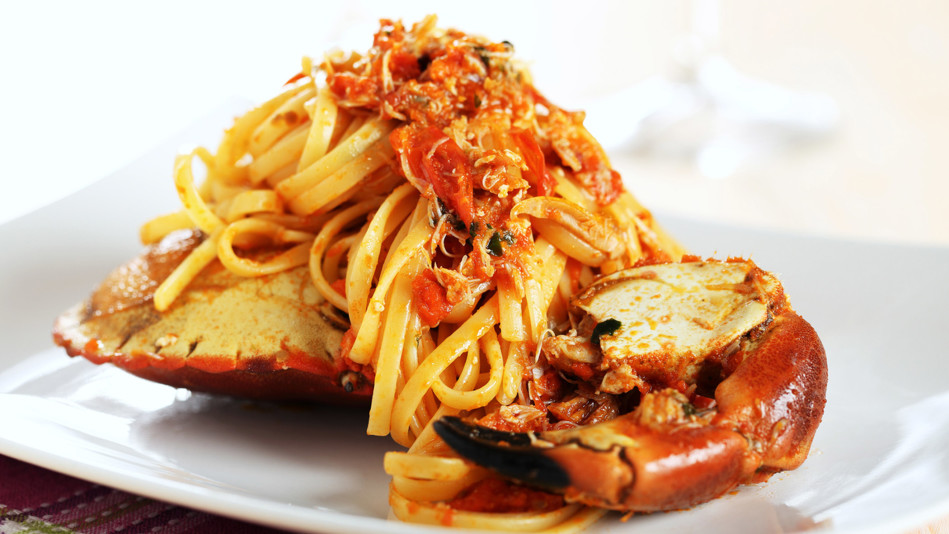
The gastronomic heritage of Ponza is based on native legumes and local fish. Among the main dishes we find the cicerchie soup, the lentil soup and “u cuniglie senza arrecchie“, dialect word for “rabbit without ears”, a recipe based on boiled beans and tomato. Popular preparations are “linguine c’o fellone” (linguine with spider crab), stuffed squid, pontine casatiello and zeppole. In the restaurants but also in the fish market you can easily find the catch of the day.
Local enology is dominated by the Biancolella di Ponza IGT Antiche Cantine Migliaccio. The White or Rosé Fieno is also vinified in the same cellars. The bottles of Faro Della Guardia are instead from the Casale Del Giglio winery and have been produced since 2010 with the launch of a project that intends to enhance the Biancolella vine of the Pontine countryside. The Marisa Taffuri farm produces Vino di Bianca (Biancolella, Sauvignon and Malvasia), Don Ferdinando sparkling wine and Isola di Ponza grappa.

